Steel drum leakage detection signal processing based on time-frequency domain (3) Van Persie Chapter III Time-Frequency Analysis of Leakage Acoustic Signals This paper uses MATLAB software to simulate the time-frequency analysis of steel drum acoustic emission signals. According to the collected steel drum acoustic emission data, the sampling frequency fs of the waveform is 1000 kHz, and the number of sampling points N is 2048, then the time t=n/fs, n is any point of 2048 points, n=0: N-1 . The signals are analyzed in the time domain and frequency domain of the acoustic emission signal, respectively. The leakage acoustic emission signal of the steel drum has a wide spectrum, which includes not only the frequency components in the audible sound wave range, but also the frequency components in the ultrasonic frequency band. The signals and noise of these frequency components may propagate along the leaking steel drum to the sensor, so the spectrum of the leakage signal collected by the sensor has a relatively rich composition [1]. As shown in Figure 3.2, there is a certain leakage signal present in the frequency range from 0-150 KHz. And we need only the signal of a certain frequency band to detect the sound emission signal of the steel barrel leakage. Others are not what we need, but also have an influence on the detection signal, so we must process the collected acoustic emission signal. Need to get rid of the missing parts, leaving the parts we need. 3.1.1 Spectrum analysis Fourier transform is a method of analyzing signals [2], which can analyze the components of signals, and can also synthesize signals with these components [2]. MATLAB provides a variety of functions that implement fast transformations, such as fft, wewt, fft2, and ift2. Among them, fft2 and ifft2 are two-dimensional fast Fourier transforms and inverse transforms for discrete data. Fft and ifpt are respectively performing one-dimensional fast Fourier positive and negative transformations on discrete data [2]. Since there is no zero subscript in MATLAB, the upper and lower subscripts of the formula are shifted to the right by one. Figure 3.1 FFT part of the program code Figure 3.2 Spectrogram of the acoustic emission signal of the steel drum The waveform shown in Figure 3.2 is obtained by FFT. Comparing the FFT of the leakage signal with the standard signal, the leakage signal is significantly larger in the vicinity of 110 kHz than the standard signal. Comparing the leakage signals with different leakage aperture sizes, the amplitude around 110 kHz increases with the increase of the aperture. Therefore, the characteristic frequency of the leaked acoustic emission signal is obviously around 110 kHz, and the noise frequency is around 25 kHz. 3.1.2 Noise reduction of leaking acoustic emission signals The leakage acoustic emission signal of the steel drum passes through the steel barrel wall, the sensor, the signal acquisition card, the transmission equipment, the amplifier, etc., which causes the signal to be accompanied by a lot of noise. The large amount of these noises causes the acoustic emission signal of the steel barrel leakage source to change, which will cause The accuracy and accuracy of the leak detection of the steel drum is reduced, so we must find a certain signal processing method to reduce the noise, which is the real increase in the intensity of the leaked acoustic emission signal. According to the spectrogram obtained by the above FFT, the leakage acoustic emission signal of the steel barrel has two obvious protrusions in the frequency domain, one is noise and the other is the characteristic frequency of the acoustic emission signal. Because the acoustic emission characteristic frequency of the steel drum is around 110 kHz, we need to filter out the high frequency and low frequency signals, and because the steel barrel leakage acoustic emission signal is a kind of non-stationary random signal, we should choose a random signal suitable for non-stationary. Filtering method - FIR bandpass filtering [26]. Figure 3.3 FIR filter interface The design uses the MATLAB tool FDATool to design the FIR filter, as shown in Figure 3.3. The filtering of the acoustic emission signal can be effectively implemented. Based on the characteristics of the leakage acoustic emission signal of the steel drum and the specific parameters of the FIR filter [23], the initial design of the filter amplitude-frequency diagram is shown in Figure 3.4, and the phase delay diagram is shown in Figure 3.5, the main filter The parameters are set to: (1) the response type is bandpass; (2) the design method is equal ripple; (3) the filter order is the minimum order; (4) the density factor is 20; (5) the sampling frequency Fs in the frequency parameter =1000kHz, bandpass frequency Fpass1=90kHz, Fpass2=140kHz, bandstop frequency Fstop1=80kHz, Fstop2=150kHz passband ripple Apass=1dB, stopband attenuation Astop1=40dB, Astop2=40dB. Figure 3.4 Amplitude - Frequency Map Figure 3.5 Phase Delay Diagram Use the designed filter to filter the collected acoustic emission signal of the steel drum. The steps are as follows: open the file of the fdatool interface and select Export; the output variable name defaults to Num, and then set b=Num, a= in the editor. 1, x = filter (b, a, A); the specific program is shown in Figure 3.6. After the filter is filtered, the acoustic emission signal waveform of the steel drum is shown in Figure 3.7. Figure 3.6 Filter program part code Figure 3.7 Filtered acoustic emission signal time domain waveform Comparing the sound emission filtering in the time domain as shown in Figure 3.15 and Figure 3.7, it can be seen that the low frequency noise in Figure 3.7 is weakened by the filter filtering, so that the filtered time domain signal waveform is more clearly visible than the original signal waveform. As can be seen from the figure, there are some low-frequency interferences in the filtered signal, so that the filtered time-domain signals appear irregular and irregular pulses. Moreover, a small portion of the signal distortion occurs at the beginning of the filtering of the acoustic emission signal, which is mainly due to the delay of the filter before it enters full operation [4]. 3.1.3 Power spectrum estimation The purpose of the power spectrum estimation is to give a description of the frequency component distribution of the signal and the random process based on the finite data. The power spectrum estimation of the filtered steel drum acoustic emission signal is obtained as shown in Figure 3.9. The specific procedure is shown in Figure 3.8: Figure 3.8 Power Spectrum Estimation Partial Program Code Figure 3.9 Acoustic emission signal power spectral density According to the power spectrum estimation analysis of the acoustic emission signals of the steel drums collected by multiple groups, the amplitude of the acoustic emission power spectral density increases with the leakage aperture of the steel drum, and the power of the acoustic emission signal of the standard steel drum. The maximum spectral density is around 310-6. If the maximum power spectral density of the acoustic emission signal of the steel drum exceeds 110-5, the steel drum is likely to be a leaking steel drum. 3.1.4 Hilbert Huang Transform (HHT) The Hilbert-Huang transform transforms the local characteristics of the acoustic emission signal, and analyzes the structural basis function of the signal itself to decompose the acoustic emission signal components of different sizes. The modal function represents the intrinsic fluctuation mode of the acoustic emission signal of the steel drum. The analysis of the inherent modal function component after the empirical mode decomposition can obtain a rich and rich time-frequency energy signal in the signal, as shown in Fig. 10. The empirical mode decomposition is performed on the collected acoustic emission signal under the 0.5mm aperture leakage state. The decomposition pattern is shown in Figure 3.11, and the decomposed signal is analyzed by Hilbert spectrum analysis and marginal spectrum analysis. Figure 3.10 Empirical Mode Decomposition Partial Program Code It can be seen from Fig. 3.11 that seven natural modal function components are obtained by empirical mode decomposition. After detailed analysis of these components, the first natural modal function component is the leakage acoustic emission signal of the steel drum. The component with the largest characteristic frequency corresponds to a leakage acoustic emission signal with a frequency of about 110 kHz, and the second natural modal function component corresponds to a noise signal with a frequency of 25 kHz, and the seventh natural modal function component The smallest characteristic component of the acoustic emission signal for the steel drum leakage. Figure 3.11 Empirical Mode Decomposition Diagram of Leakage Signal We perform the Hilbert transform on the intrinsic mode function component obtained by empirical mode decomposition of the leakage signal in Figure 3.11, and the Hilbert spectrum shown in Figure 3.12 and the margin shown in Figure 3.13 can be obtained. Spectrum. In Figure 3.12 and in Figure 3.13, there are signal frequencies around 25 kHz and around 110 kHz. According to the spectrum and power spectrum analyzed earlier, the signal near 25 kHz is noise, while the frequency of the leaking acoustic emission signal is near 110 kHz. . The energy of the signal is obtained by Hilbert's yellow transformation of the acoustic emission signals of steel drums with different apertures. The larger the leakage aperture, the greater the energy of the marginal spectrum. Figure 3.12 Leakage Signal Hilbert Spectrum Figure 3.13 Leakage signal marginal spectrum The marginal spectrum analysis of the filtered acoustic emission signal data of multiple sets of standard steel drums and the acoustic emission signal data of steel drums with different leakage aperture sizes are respectively compared, and the maximum marginal spectrum of the standard steel drum acoustic emission signals is less than 1.3. If the marginal spectrum of the acoustic emission signal of the steel drum exceeds 1.3, the steel drum is a leaking steel drum. 3.2.1 Time domain simulation waveforms of signals and their distribution From the time domain waveform of the acoustic emission signal, it can be seen that the amplitude characteristic of the steel drum leakage signal changes with the change of the leakage aperture of the steel drum with time. Therefore, the change of the amplitude can be seen from the time domain simulation waveform. . In the actual detection process of steel drum leakage, since the acoustic emission signal of the steel barrel leakage source is very weak, the amplified weak acoustic emission signal is usually amplified by the amplification circuit, converted into digital signal data of a certain size, and then input device. Enter the computer for analysis. As shown in Figure 3.14, the standard signal, 0.2mm aperture leakage signal, 0.5mm aperture leakage signal, 1.0mm aperture leakage signal data are assigned to ABCD, and then plotted, the abscissa is time, the ordinate is amplitude, run program. The results of the operation are shown in Figure 3.15. As shown in Figure 3.15, the simulated time domain waveform of the leakage acoustic emission signal of the steel can only obtain the approximate change of the amplitude of the acoustic emission leakage signal, but the signal cannot be described and analyzed in detail. Therefore, in order to obtain the time domain characteristic parameters of the leakage acoustic emission signal of the steel drum, we need to further quantitative analysis of the acoustic emission signal. Figure 3.14 Drawing Time Domain Waveform Program Figure 3.15 Steel drum acoustic emission signal time domain waveform In order to better analyze the characteristics of the time domain characteristic parameters of the leakage acoustic emission signal of the steel drum, the acoustic emission signals of the steel drum leaking into the computer are respectively according to the acoustic emission signals of the standard steel drum and the acoustic emission with different aperture sizes when the leakage steel barrel leaks. The signals are divided into 5 groups, and the amplitudes of each group of signals are respectively counted, and a table is made according to the statistical result, and the characteristics of the signal amplitude are analyzed by a table. Table 3.1 Relationship between leakage pore size and amplitude 0mm (standard) 0.2mm 0.3mm 0.5mm 1.0mm Amplitude size v 0.0012 0.0019 0.0067 0.025 0.14 Figure 3.16 Relationship between leakage pore size and amplitude By sequentially connecting the coordinates of the points on Table 3.1, the amplitude distribution curve of the leakage signal of the standard steel drum and the different leakage aperture steel drums can be drawn, as shown in Figure 3.16. It can be seen from the figure that the leakage acoustic emission signal of the steel drum varies with the characteristics of the acoustic emission source. The distribution is different from the standard steel drum and the leakage hole size of the steel drum. When the diameter of the leakage hole is large, the amplitude of the acoustic emission signal of the steel drum is relatively dispersed, and the maximum difference between the positive and negative amplitudes is Large, when the leakage hole diameter of the steel barrel is small or does not leak, the amplitude of the acoustic emission signal of the steel drum is more concentrated, and the maximum of its positive and negative amplitude is smaller. This shows that the distribution of the leakage signal has a great relationship with the leakage aperture. 3.2.2 Mean (SAL) and Mean Square (RMS) of Acoustic Emission Time Domain Signals The analysis of the time domain characteristic parameters of random signals is a method to effectively describe random signals. The time domain characteristic parameters of acoustic emission signals mainly include mean square value, mean value and variance. Experiments were carried out on standard steel drums, 0.2 mm, 0.5 mm, and 1.0 mm pore size leaking steel drums, five times in each group. The procedure is shown in Figure 3.17. As shown in Table 3.2, the mean square and mean values ​​of several sets of filtered steel drum acoustic emission signals are obtained separately. Figure 3.17 Finding the Mean Mean Value Partial Program Table 3.2 Calculation results of time domain feature quantity of leakage signal Feature amount the first time the second time the third time the fourth time the fifth time Standard (0mm) Mean -8.5027e-07 -6.79274e-07 -5.70537e-07 -9.55546e-07 -8.18635e-07 Mean square value 0.00017607 0.000206035 0.000160567 0.000169151 0.000164451 0.2mm Mean -1.0008e-06 -9.33033e-07 -9.51477e-08 -8.98199e-07 -6.04869e-07 Mean square value 0.00037687 0.000381093 0.00035149 0.000352732 0.000373246 0.5mm Mean 5.9555e-08 2.53018e-06 -2.5355e-06 5.61606e-07 -5.76241e-06 Mean square value 0.00511135 0.00518833 0.00524539 0.00611025 0.00552995 1.0mm Mean -1.2324e-05 1.15988e-06 4.02003e-06 -1.02038e05 4.22021e-06 Mean square value 0.0106125 0.0118906 0.0118194 0.00949618 0.0111874 As can be seen from Table 3.2, the mean does not show the characteristics of the steel drum leakage source. For the mean square value, the mean value of the leakage signal of the steel drum with the same leakage aperture size does not change much at each test; and the mean value of the steel drum with different apertures becomes larger as the aperture becomes larger. It can be seen that the size of the leak hole can be judged by the size of the mean square value in the project. This chapter describes in detail the characteristics and processing methods of the leakage signal, and studies the time domain and frequency domain of the leakage signal, focusing on the time domain mean square value of the leakage signal, fast Fourier transform, power spectrum, Hilbert yellow. The transformation was carried out experimentally and analytically. The self-developed steel drum leakage acoustic emission signal detection system is used to analyze and process the steel drum acoustic emission signal, and the analysis results of the filtered steel drum leakage signal are shown in the following table: Table 3.3 Signal characteristic parameters of different leakage apertures Mean square value (RMS) FFT maximum amplitude Power spectrum maximum amplitude Marginal spectrum maximum amplitude Standard (0mm) 0.000176075 0.00010011 5.1312e-06 9.6792e-09 0.2mm 0.000386193 0.00021886 2.4524e-05 2.24584e-08 0.5mm 0.00511135 0.0031134 0.004963 4.8933e-07 1.0mm 0.0106125 0.0055116 0.015553 8.8119e-07 According to Table 3.3, the frequency domain characteristic parameters and the mean square value of the leakage acoustic emission signal increase as the leakage aperture of the steel drum increases. [1] Jiang Tao. Application research on pipeline leak detection and location [D]. Harbin Engineering University, 2008. [2] Yang Lijuan, Zhang Baihua, Ye Xuyu. Fast Fourier Transform FFT and its application [J]. Photoelectric Engineering, 2004, 31 (supplement): 1-7. [3] Hu Liying, Xiao Peng. Application of fast Fourier transform in spectrum analysis [J]. Journal of Fujian Normal University (Natural Science Edition), 2011 (04). [4] Song Aiguo, Liu Wenbo, etc. Test signal analysis and processing [M]. Mechanical Industry Press, 2007. [5] Huang Zhenfeng, Wu Jiangjun, Mao Hanling. Filter parameter setting method for metal crack acoustic emission signal FIR filter design [J]. Journal of Hebei University of Technology, 2007 (01): 36. [6] Yu Hao. Research on acoustic emission technology (AE) monitoring system for oil pipeline leakage [D]. Xi'an University of Science and Technology, 2009. ã€Related Links】 Steel drum leakage detection signal processing based on time-frequency domain (1) Steel drum leakage detection signal processing based on time-frequency domain (2) Steel drum leakage detection signal processing based on time-frequency domain (3) Steel drum leakage detection signal processing based on time-frequency domain (4) Steel drum leakage detection signal processing based on time-frequency domain (5) Brass Glass Rack,Brass Glass Holder,Tumbler Holder Kitchen,Brass Wine Glass Rack Heshan Zhongxin Sanitary Ware Ind., Co., Ltd , https://www.baolongfaucet.com
The FFT is performed on the acoustic emission signal of the steel drum collected by the experiment. The program code is shown in Figure 3.1. 










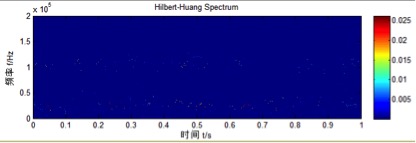
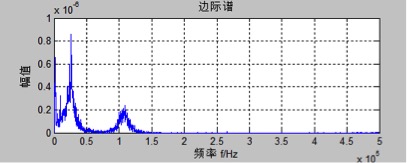
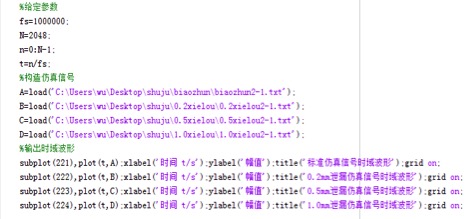
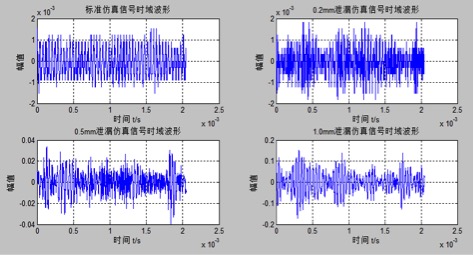
It can be seen from Table 3.1 that when the pressure in the steel drum is the same, the larger the leakage aperture, the larger the amplitude of the acoustic emission signal. 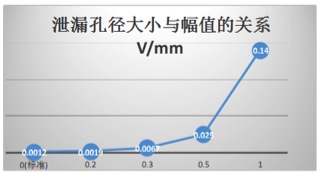
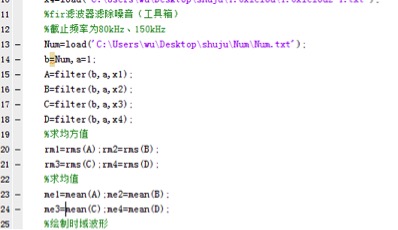
Steel drum leakage detection signal processing based on time-frequency domain (3)
Aperture size
Aperture
Leakage aperture size